
Saucha: Cleanse your body, mind, and spirit
Exploring Ahimsa — the first Yama — has truly been a deep inner journey that has brought back emotions and memories for me.Rediscovering the power
We’re Turning 5 – Celebrate With an EXTRA 15% OFF!
✨ Use code: PPB5YEARS at checkout
⏳ Offer ends Sunday at midnight – no extensions
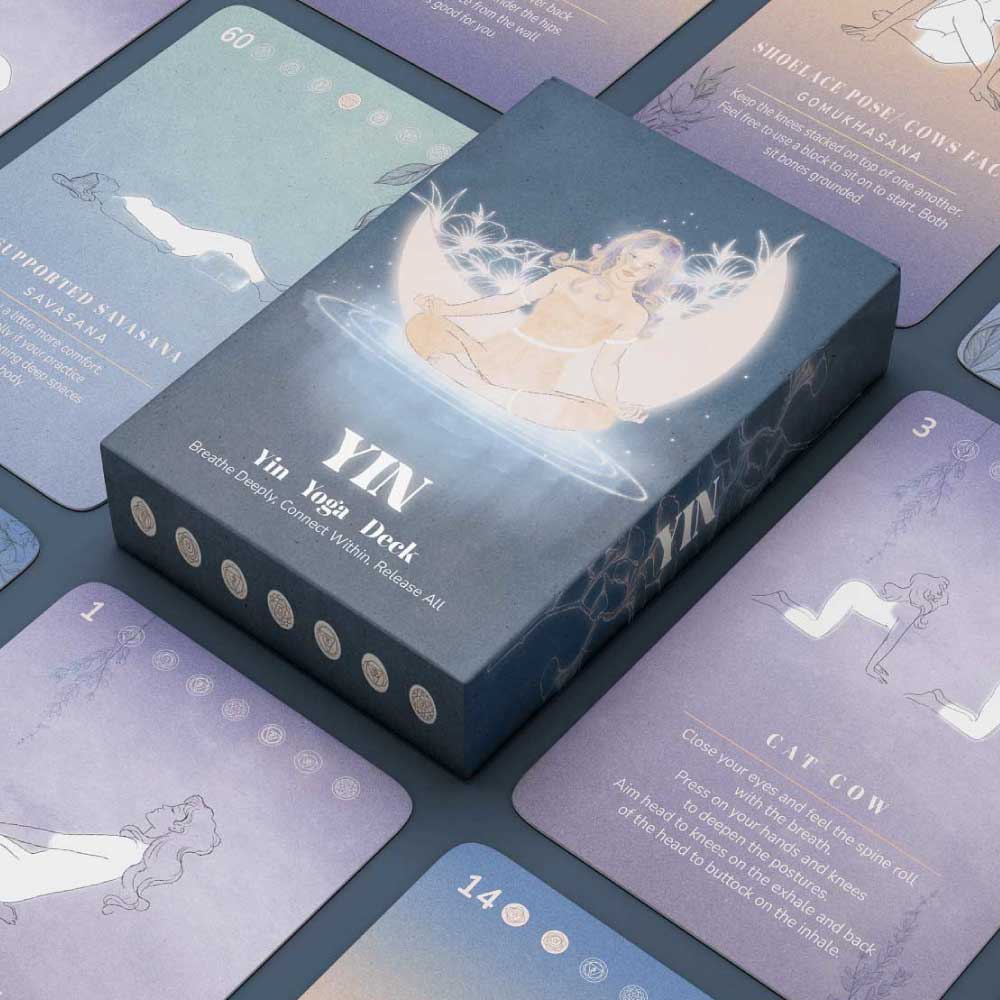
Are you a beginner practitioner and wondering if Yin Yoga is for you?
Maybe you’ve likely heard about Yin and Yang and the importance of balancing both forces…
However, unfortunately, many of us lead highly Yang lifestyles, resulting in a chronic imbalance of energies, leading to stress, insomnia, anxiety, and a host of mental and physical illnesses.
If you feel like you are always on the go, rushing from place to place or task to task without a moment’s pause, you likely need more yin activity in your life.
This is where Yin Yoga comes in. The slow, passive yoga style invites stillness into your body and mind, allowing your nervous system to find equilibrium. No matters your level of practice!
What’s even more awesome about Yin Yoga is it that is incredibly accessible for beginners.
So even if you have low fitness levels, past injuries, or existing health conditions, you can still experience the wonderful benefits of yin yoga. Intrigued? Read on to learn more about the nourishing self-care practice of Yin Yoga for Beginners and how it can benefit us.
Yin Yoga is a slow, passive and meditative practice featuring long-held stretches. Most poses are floor based (seated or reclined), and you typically hold each pose for 1 to 5 minutes.
Unlike dynamic styles of yoga like Vinyasa, there is no flowing between poses. Aside from being much slower and more static, yin yoga targets different tissues in the body than “yang” yoga styles. For example, Hatha yoga stretches the muscles, which are superficial tissues, while Yin yoga is a practice suitable for beginners, focused on stretching the tissue that sits below the muscles, like the fascia, tendons, and ligaments.
Another unique aspect of Yin Yoga is that it is the only yoga style to incorporate Traditional Chinese Medicine principles. As a result, Yin postures target particular meridian pathways, which can help to release physical tension and improve how you feel mentally and emotionally.
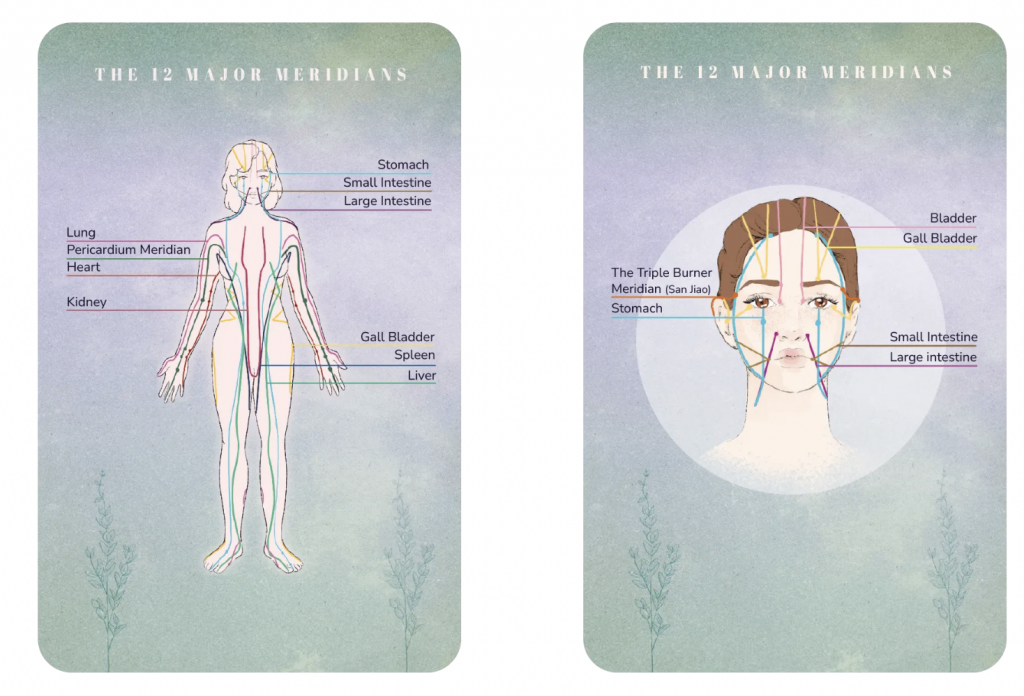
Yin is one of the newest yoga styles, introduced in the 1970s by martial arts expert and Taoist yoga teacher Paulie Zink. Since then, it has quickly grown in popularity across North America, Europe, and beyond as either beginners and advanced yogis worldwide find it a complementary practice to yang yoga styles and their fast-paced lifestyles.
Yin yoga is a gentle and effective practice for beginners who are seeking a way to reduce stress and tension in their lives. This is due to slow breathing, deep stretches, and the stimulation of the meridian pathways. Practicing yin yoga can calm your nervous system and evokes the “relaxation response,” leading to many wonderful benefits, such as:
If you’re curious to learn more about the powerful benefits of Yin Yoga, check out this article.
Yin yoga is a practice that can be suitable for beginners as well as experienced yogis.
The use of props such as blankets and blocks can help to make the poses accessible for individuals with limited mobility, making it a great option for those new to yoga.
Additionally, the focus on mindfulness and breath work in yin yoga can be beneficial for reducing stress and promoting a sense of inner peace, making it a great practice for anyone looking to start a yoga journey or deepen their current practice.
It’s important to note that yin yoga is a relatively passive practice and may not be suitable for those looking for a more physically challenging workout. However, for beginners looking to develop a strong foundation in yoga and experience the many benefits it offers, yin yoga is an excellent place to start.
With its gentle pace and focus on mindfulness, it provides a safe and supportive environment for individuals of all levels to explore the practice of yoga and discover its many benefits for mind, body, and spirit.
Many postures in yin yoga are also present in Hatha yoga and other styles. However, they are practiced differently, held for longer, and often have different names.
Here are five of the most common Yin asanas for beginners that you can start practicing right away. We recommend practicing them in the evening to help you wind down and prepare for a great night’s sleep!
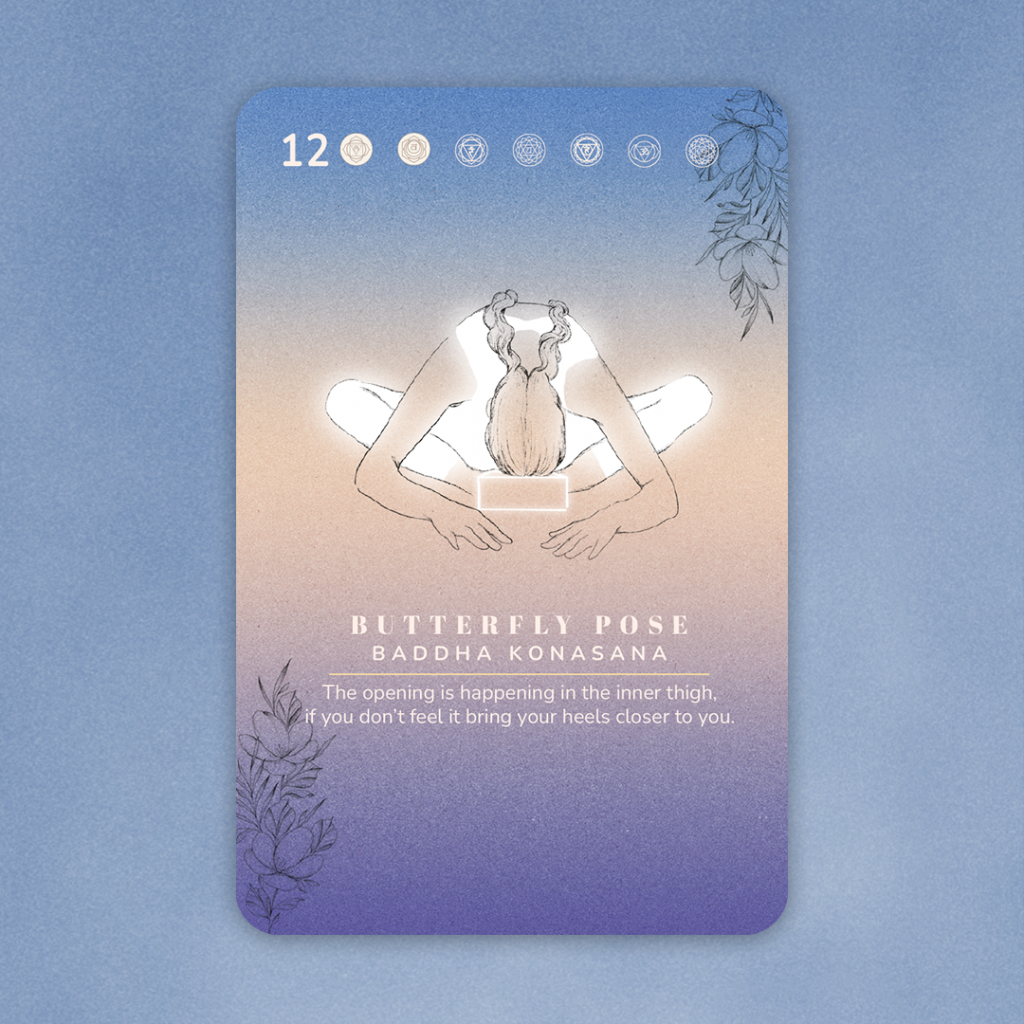
In other yoga styles, Butterfly Pose is known as Baddha Konasana (or Bound Angle Pose), where you bring the feet together to stretch the inner hips and groin. In Yin, you can do the Butterfly Pose seated (sitting upright or folding forwards), or, as a variation for beginners, you can do it reclined with the support of a bolster. The latter is particularly nourishing as you rest your head and spine over the bolster and can place blocks under your knees for additional support.
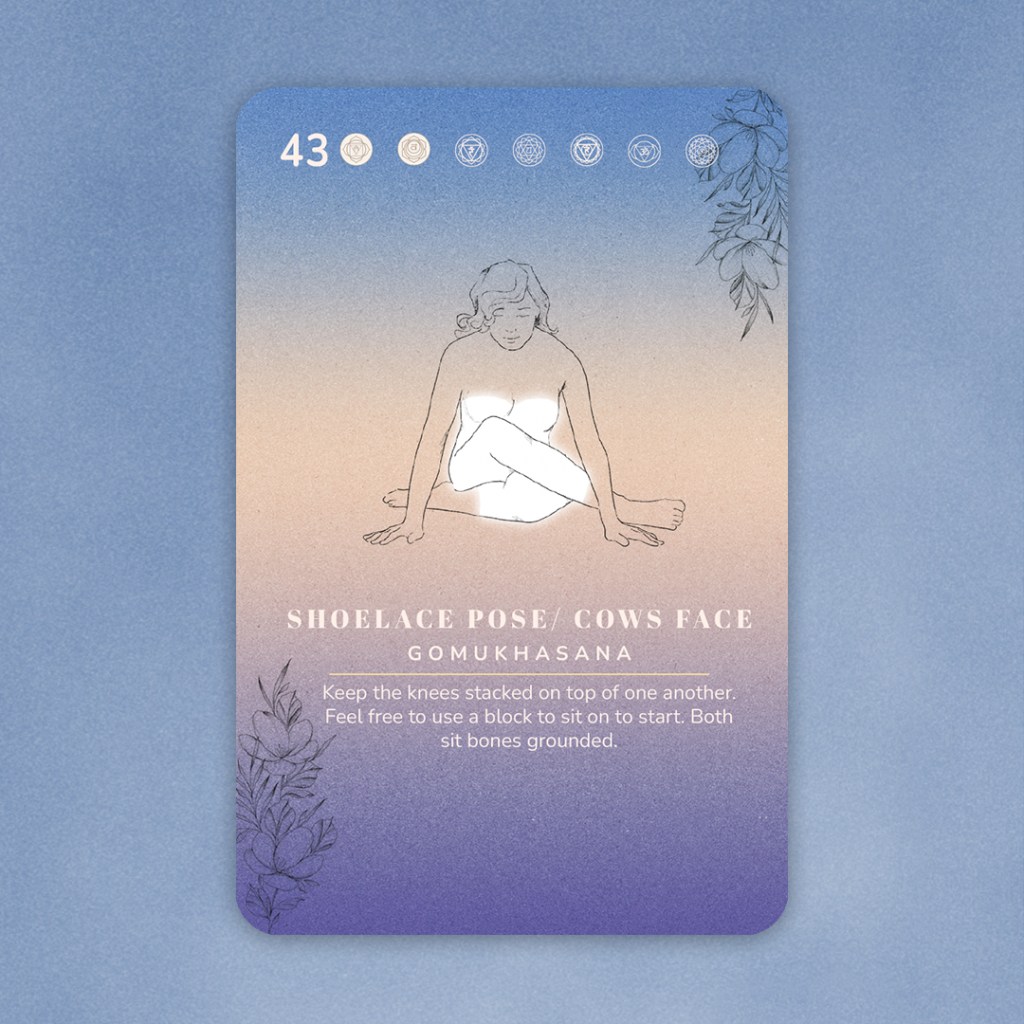
The Shoelace Pose is the yin version of the seated asana Cow Face Pose (Gomukhasana), where you stack the knees to bring a deep stretch into the outer hips and glutes. Typically in yin yoga, you do this posture holding onto the feet or folding forwards rather than binding the hands behind your back. For beginners, is also very recommended the half variation with the bottom leg straight.
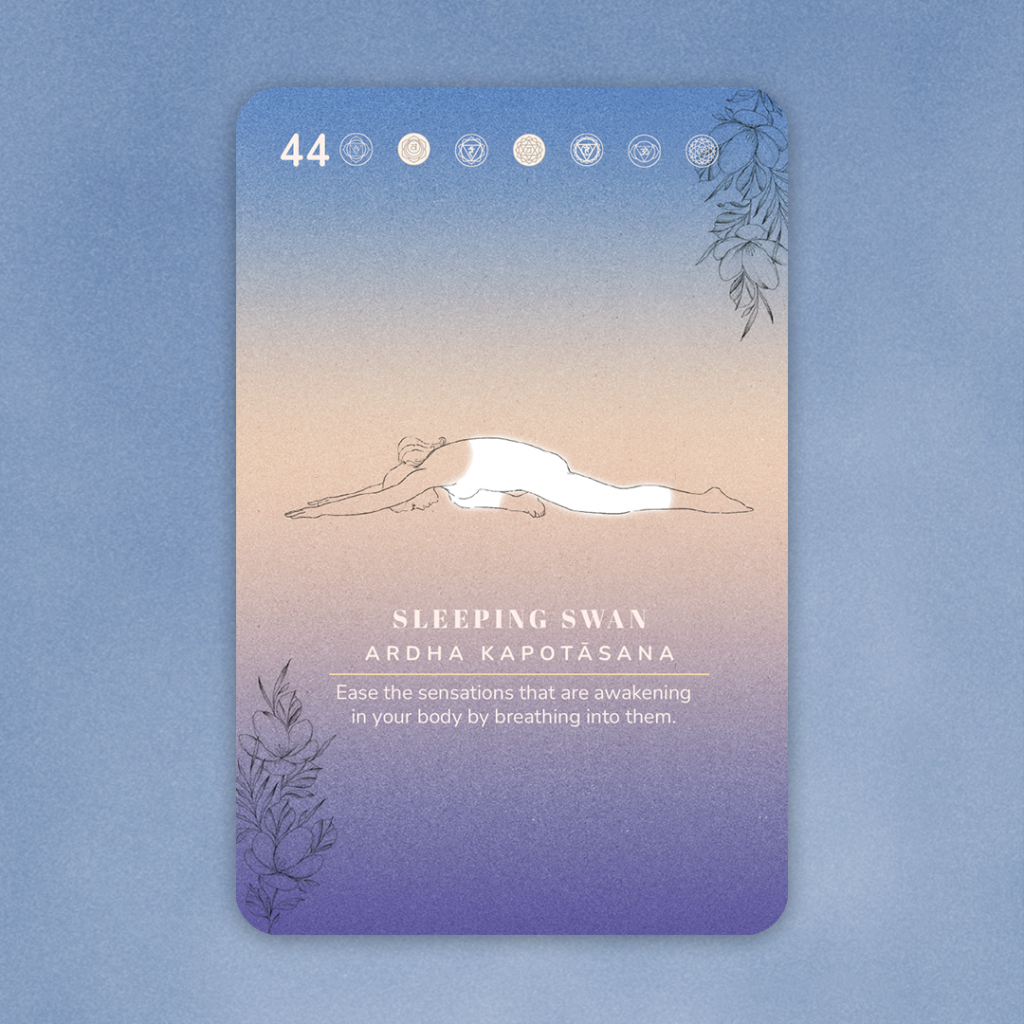
Sleeping Swan is another posture you may be familiar with, as it is known as Pigeon pose in other yoga styles. It is an excellent pose for increasing flexibility in the hip flexors and stretching the lower back muscles. However, even if it is a pose for beginners, as you hold this posture for 2 to 5 minutes, it can be among the most challenging yin asanas for many!
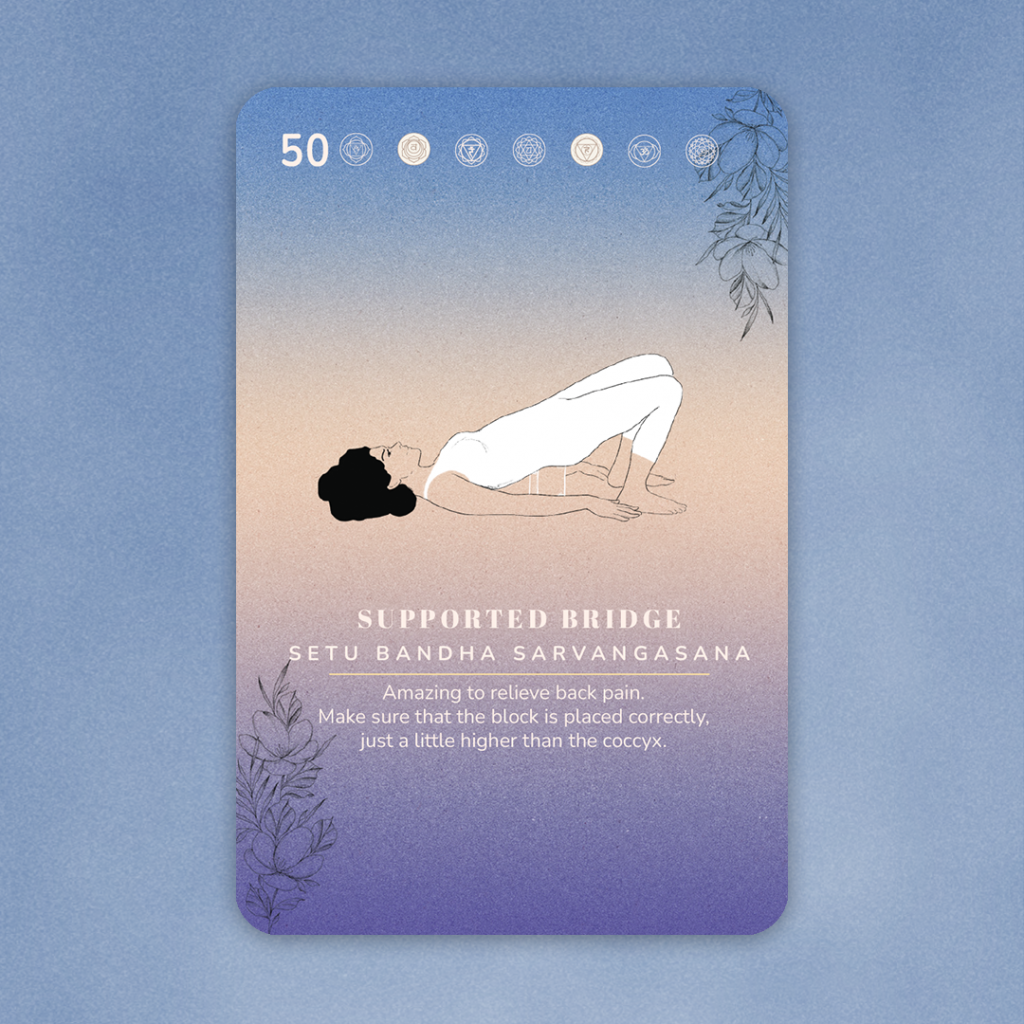
As the name suggests, Supported Bridge is a supported version of the Hatha Bridge pose. Instead of holding it for five breaths in the traditional way, you place a block under your sacrum and maintain the posture for a few minutes. This makes it a gentle and restorative backend, very suggested for beginners, that opens the heart, stretches the chest, and relieves low back pain.
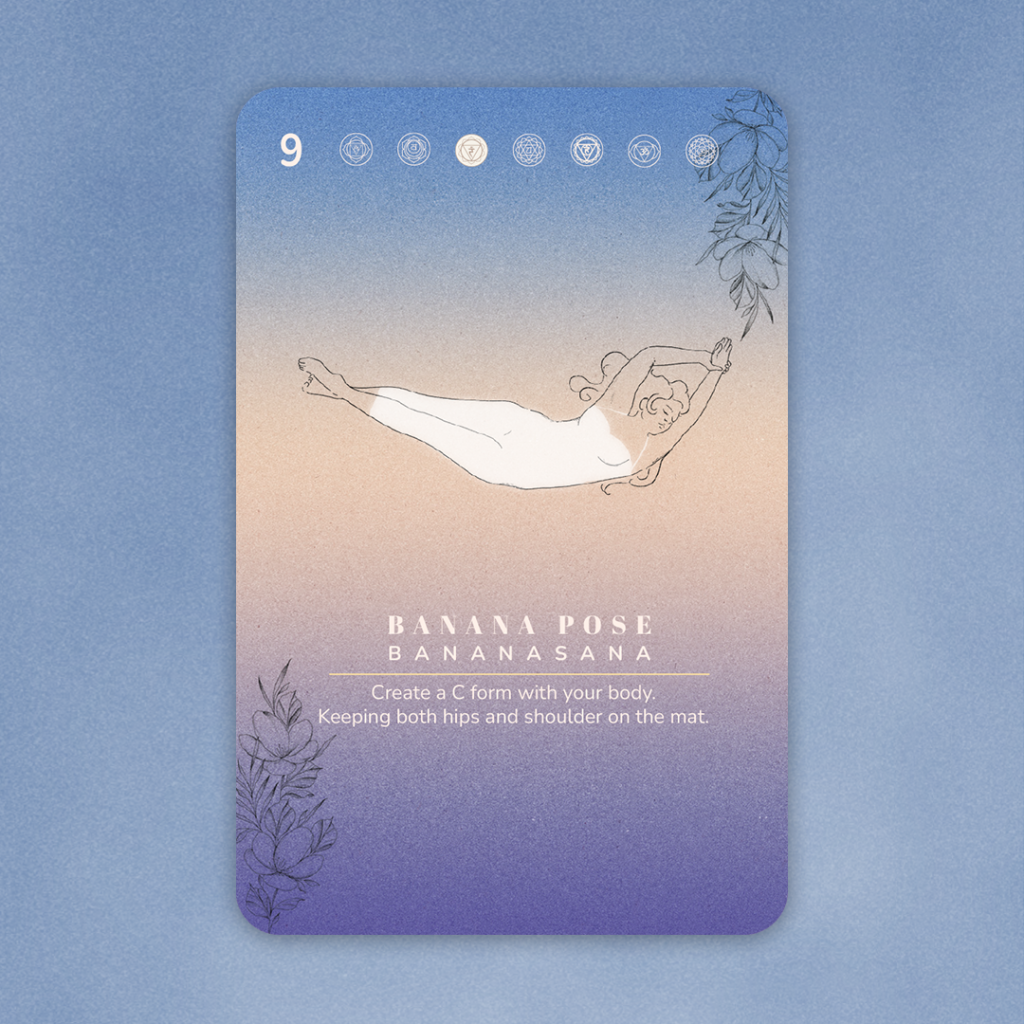
Bananasana or Banana Pose may be a new yoga posture for you. You do this gentle posture in a reclined position by bringing your body into the shape of a banana. For example, you’ll shift your hips to the left as you move your arms and legs as far to the right as possible, stretching into the left rib cage and side body.
You can also do a supported version of Banana Pose, laying on your side with a bolster under your side body (just above the hips and below the rib cage).
As mentioned earlier, despite containing some of the same postures from other yoga styles, you practice these asanas differently in yin yoga. Generally, you hold the stretches passively, so in a seated forward fold, you relax your hands by your legs rather than grab your toes and pull.
In addition, the duration you hold a posture will depend on that specific asana and the part of the body it targets. For example, you generally stay in upper body stretches for less time than lower body ones, as the tissue there is weaker.
Because of this, guidance is needed when starting a yin yoga practice, even if you already practice other styles. You can find this in the PlayPauseBe Yin Yoga deck, an innovative deck of cards solely dedicated to this therapeutic style, perfect if you start as a beginner practitioner of this style.
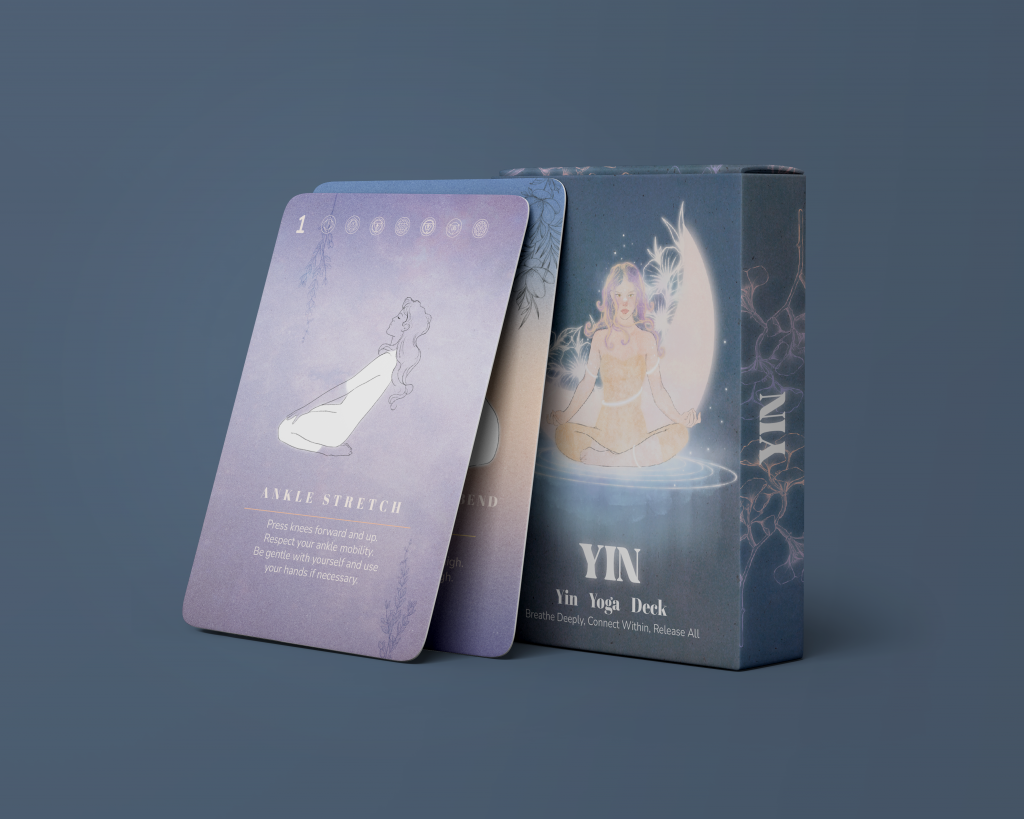
The deck contains 60 illustrated yin poses with focus phrases, chakra and meridian indications, and bonus cards to help you understand how to work with these energy channels. It also has a complete manual with detailed instructions and contraindications for each pose.
The PlayPauseBe Yin Deck alone will help you create and follow a regular yin yoga practice for beginners, with endless sequence ideas. However, opt for the Yin Yoga PRO package if you want to experience maximum benefits from this nourishing yoga style.
Along with the deck, this incredible deal includes the official Guidebook with many pre-made sequences and the comprehensive Yin Academy course. The course features in-depth breakdowns of every Yin pose in the deck and lessons on how to build sequences and tailor your practice to your unique needs.
Click on the image below to discover more!


Exploring Ahimsa — the first Yama — has truly been a deep inner journey that has brought back emotions and memories for me.Rediscovering the power

Over the past few emails, I’ve shared pieces of a bigger story—one about transformation, growth, and the bold leap forward we’re about to take together.
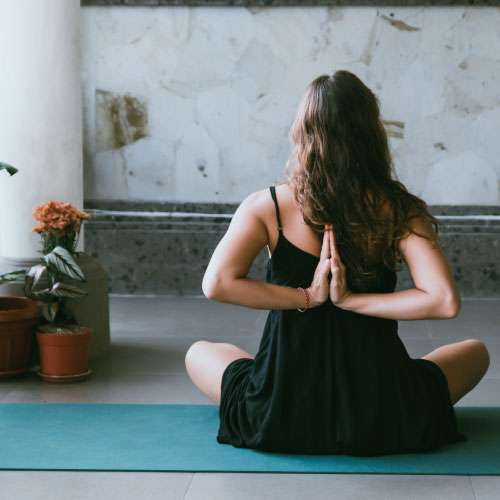
Hi! How’s your self practicing going? But, most of all… How do you feel in your daily life? I still remember the words of one of

Celebrate With an EXTRA 15% Off
Enjoy an extra 15% OFF everything – decks, bundles, and courses.
✨Use code: PPB5YEARS at checkout
Offer ends Sunday at midnight – no extensions!